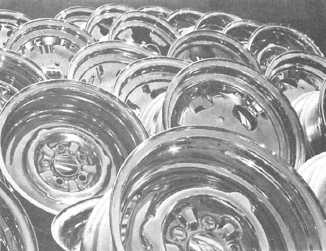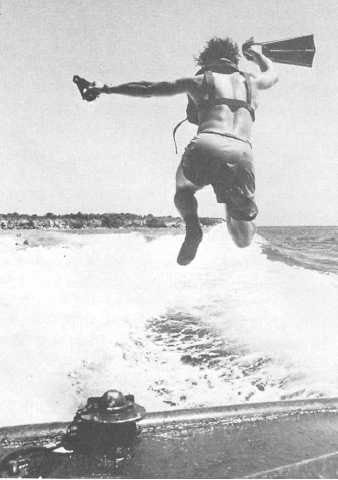Figure 12-17.—Rhythm composition.
accustomed to viewing nature in three dimensions, it is
important that photographs also give the illusion of
depth to make them appear more realistic.
The impressions of depth and distance are normally
obtained when you mentally compare the relative size of
various objects — near objects appearing large and the
more distant objects much smaller, even though they are
the same physical dimensions. You can easily create the
illusion of depth in a photograph by placing common
objects in the foreground or background, so the relative
sizes of all objects can be determined.
You can also create depth by selecting a camera
viewpoint that gives the impression of distance by
perspective. This illusion of distance is sometimes
enhanced when you exaggerate the perspective by
changing the camera position, by using a wide angle lens
or by emphasizing texture and modeling through the use
of strong sidelighting. Focusing the principal object
critically sharp and leaving the background somewhat
out of focus usually directs more attention to the subject
and tends to increase the feeling of depth. Backlighting
the subject gives better separation and makes it appear to
stand out more prominently from the background,
accentuating the subject and increasing the feeling of
depth.
The feeling of depth also can be increased by
making the foreground darker in tone than the main
point of interest or the background. In some cases, this is
done during printing by simply burning in the
foreground.
Figure 12-18.—Good action shot at its peak.
ACTION
Action in a photographic composition can be either
physical or implied.
In physical action, such as a fleet runner, the motion
or position of the runner cannot be held. It changes after
the split second in which the photograph is taken.
Action can be implied by a position that suggests a
physical action will take place, or it can be facial in
which the subject’s face suggests or expresses action or
a definite emotion.
Good action is shot at its peak as shown in figure
12-18. Where the action is fast-moving, as it is in a
sporting event, the peak of action is short and some-
times difficult to determine. To capture this action
requires precise timing and know-how. However, in
feature development you have the advantage of being
able to plan the action logically after studying the job.
12-19




